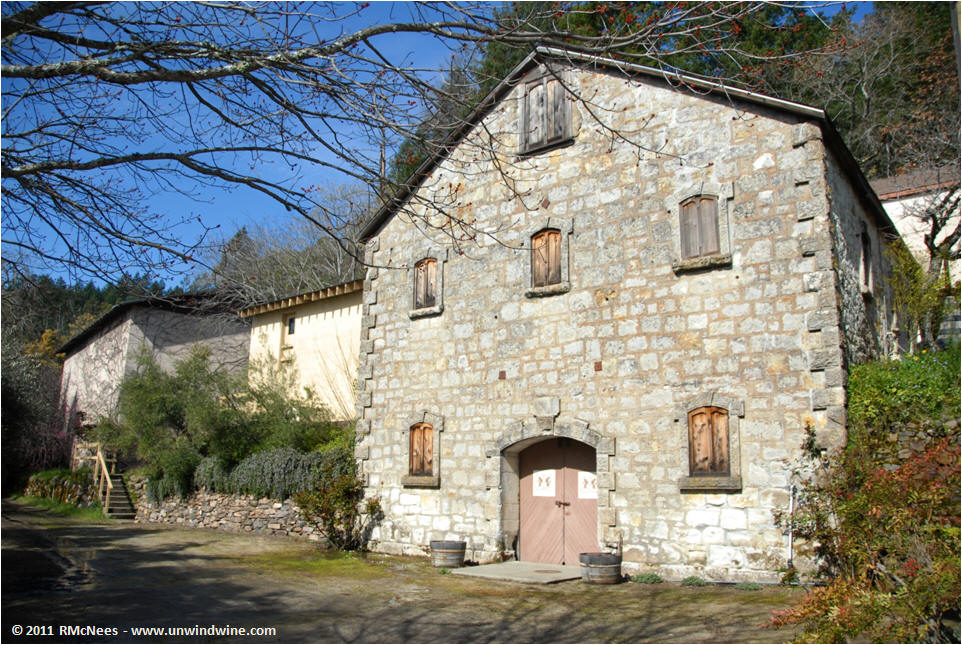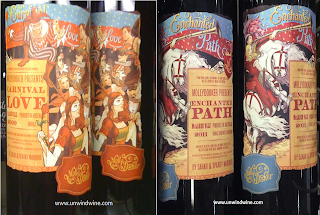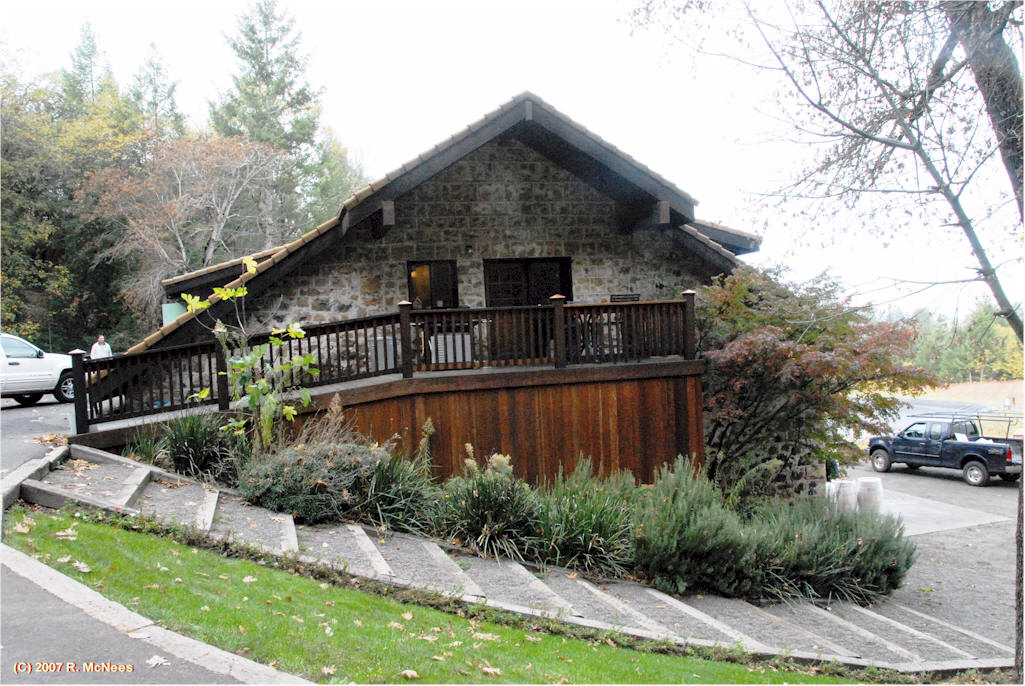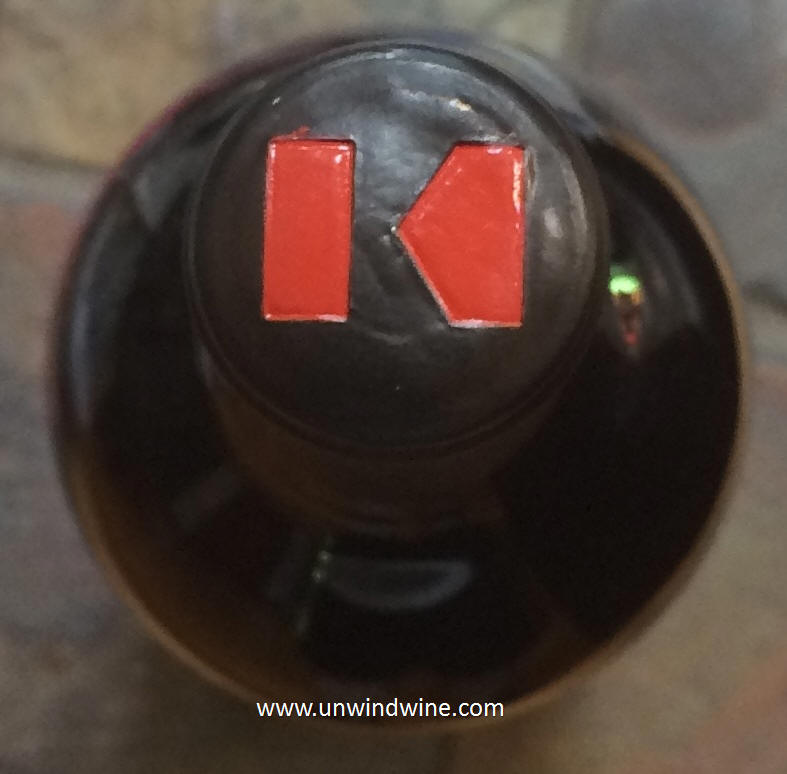Italian Village Villa Calcinaia Producer Sebastiono Caponi Wine Dinner
Wine Director Jared Gelband of Italian Village
Chicago hosted a wine producer dinner featuring special guest Sebastiono Caponi of Villa Calcinaia in Greve-in-Chianti, Firenze, Tuscany, Italy.
The themed dinner - "A Night in the Cypress" featured a six course dinner prepared by Executive Chef Jose Torres with wine pairing accompaniments for each course from Villa Calcinaia.
The evening was held in the Italian Village Vivere dining room, the upscale of the three restaurants that make up the Village with its unique funky elegance.
Kicking off the evening, the full house was welcomed by Italian Village Proprietor and General Manager Gina Capitanini.
The featured producer this evening was Sebastiono Caponi of Villa Calcinaia in Tuscany consisting of a flight of six wines, five from the Calcinaia estate, to accompany each course. We were also served the Villa Calcinaia estate Chianti Classico Extra Virgin Olive Oil.
Sebastiono was delightfully engaging, he presented the history of the family, the estate, their vineyard plantings and a perspective on each wine. He revealed surprising impressive insights and knowledge of Chicago and even Indiana, as several of our fellow 'Pour Boys' (our wine group), Dr Dan and Ernie, and their guests were Hoosiers, having traveled into the city to accompany me and wife Linda for the evening event.
As is typical with these events, the pairing of the wine with the food was extraordinary - amplifying the enjoyment of both.
The Calcinaia property has been in the Capponi family dating back to 1524 when Sebastiano del Caccia and Niccola di Andrea
Capponi sold to Capponi "four poderi
(self-contained agricultural units) a gentleman's house and two buildings in a
place called Calcinaia overlooking the road to Greve, the drive in front of the
Villa today.
Today, the Villa Calcinaia estate produces a broad portfolio of more than a dozen Chianti Classico IGT, DOC and DOCG wines - all 100% estate sourced fruit, reds, whites, a sparkling wine produced in the traditional methode champonaise style, a dessert wine, and Chianti Classico olive oil.
In the
mid 16th century Calcinaia was considered important enough to be depicted in the maps of the Captains of the Guelph Party. The buildings enclosed by
a wall, included the "house of master Giovanni Battista
Capponi", a look more in line with the rank of its owner, a high-ranking
official and future senator of the Granduchy of Tuscany.
The original
four poderi of 1524 - Sepale, Calcinaia, San Piero al Pino and
Bastignano - were increased in number through the years: Casarsa, in
1643 and the rest during the following two centuries. Calcinaia remained
a simple country house until the second-half of the eighteenth century,
when Count Ferdinando Carlo Capponi, a first-class administrator, reorganized the property in the Greve valley, building a fermenting cellar, storage cellars, the lemonhouse, and
the rear section of the Villa that had been refurbished
some fifty years earlier by Count Ferrante Capponi, who also added
the Chapel.
 |
The wine flight Villa Calcinaia selections
|
The estate has a historic heritage of vines and olive
trees dating back to the end of the 19th century. Villa Calcinaia consists of 450 acres, seventy planted to vines in twenty-six different plots, the remainder in olive groves, surrounded by forests. The old vineyards
were planted between 1959 and 1975 with more added later.
 |
The Villa Calcinaia vineyards
|
The estate sits alongside the Greve river that divides the valley in two sides with different soils on each side. The right bank is characterized by the
mountain range known as “Monti del Chianti” and the soil there
comprises primarily sandstone and sand formed by the break-up of the
bedrock of these mountains.
The left bank, where Villa Calcinaia stands, is of Eocene origin
with calcareous clay, the predominant soil type of the area.
 |
Italian Village Vivere elegant funky dining room
|
The name
Calcinaia can be translated as 'chalk quarry', the material necessary for the making of mortar. The calcium can be found in great abundance on the estate and
creates a certain fil rouge between the different soils.
There are also important differences in the various vineyards' varying elevations, from 200 meters to 350 meters above sea level,
and varied exposure as well as many small tributaries of the Greve river
crossing the estate. On the lower grounds,
patches of soil have grey clay, called in tuscan dialect “mattaione”.
Generally, the soil in Calcinaia is loam; deeper soils
with higher presence of sand in the lowers slopes towards the Greve
River, and shallower silty soils with abundance of rocks on the higher grounds, known as “galestro”:
a clayey schist whose exfoliating structure, crumbly surface,
permeability, pebble content and wealth of trace elements ensure the
vine’s vegetative balance and characterful wines.
 |
Villa Calcinaia owner producer
Sebastiono Caponi |
Above the altitude of about 300 meters, there are outcrops of
“alberese”, a calcareus marl more typical of the area of Gaiole that contributes to the wide array of soils at Calcinaia.
The estate produces Chianti Classico from
Villa Calcinaia, considered the truest expression of the property proudly branded and labeled Capponi, producing three single vineyard designated wines that represent the distinct terroir of three notable vineyards on the estate.
The La Fornace vineyard was planted in 1975 by the Toti family,
sharecroppers who had run the “podere” Le Fornaci from the beginning of
the twentieth century. In 1975 the three brothers Natale, Renato and
Adolfo, in agreement with the owners, planted just over a hectare of Sangiovese. American vines were
also planted before being grafted after a few years with Sangiovese
taken from the other vineyards of Villa Calcinaia.
The La Fornace vineyard has a
southern exposure lying nearest the river Greve, characterized by a greater presence of sand and the typical gray clay, like that which is still
used for the production of bricks. This increases the complexity of
the soil and is the basis for the name La
Fornace. Sangiovese grown here reflects the specific soil texture of La
Fornace, similar to those that grown on the
right bank of the river Greve and often described as the most “Lamolese”
of all the crus of Villa Calcinaia.
The wines sourced from here are characterized by a very fragrant and elegant wine, defined by fine and graceful tannins.
Over the last ten years, Villa Calcinaia has renewed many of the vineyards to
achieve increased production of Chianti Classico wines. The
renewal and restoration program included
crafting the terraced land thereby allowing the vines to be planted
following the contour line rather than the high East incline. They were planted with historical
clones of Sangiovese determined through examining each vine
on the plots of land originally developed by the sharecroppers. From
this generation of vineyards, planted on a clayey and calcareous soil ,
surrounded by a pine forest, is the Bastignano vineyard. Since the 2006 vintage, this sources production of Chianti
Classico Sangiovese, designated Vigna Bastignano
after the name of the vineyard.
From the unusual microclimatic warmth and the exposure, Bastignano produces wines with character of light, ruby, sunny and spicy bouquet and a distinct soft elegance of taste. This was the single vineyard designated label served with tonight's dinner.
The third vineyard selected for a single vineyard designated bottling, Contessa Luisa, was planted by Ferrante Capponi in 1959. The block was dedicated to his mother Luisa Vonwiller and remains today the
oldest vineyard still in production at Villa Calcinaia. The two hectare plot is
located on a hill facing west, the only such one on
the Estate, which receives the warmth of the afternoon sun. The
soil is characterized by a strong clayey character and a good depth.
The American vines were grafted with the Estate mass
selection Sangiovese varietal, as well as a small amount of other varietals that make the vineyard population
more diverse and vibrant. Wine produced from this vineyard tends to have a very rich and
opulent nose, characterized on the palate by an imposing tannic
structure, resulting from the clayey nature of the soil.
The dinner courses and wine pairings menu shown below:
The dinner courses and wine flight were designed by Jared and Chef Jose Torres, curated by special guest Sebastiano Capponi, the owner of the estate, who talked about each wine course and the history of the vineyard.
Ricezione
Grilled Watermelon / Cherry Heirloom Tomato / Burrata / Frisée /
Balsamic Vinaigrette / Shaved Radish / Sea Salt
Served with:
Cantine Coppi 'Bollicinecheri' Sparkling Extra Dry Rose Salento IGT
Antipasto
Seared Shrimp / Caponata / Toasted Hazelnut / Citrus Vinaigrette
Served with:
Villa Calcinaia 'Comitale' Bianco dei Colli della Toscana Centrale IGT
Like all the Villa Calcinaia wines, this is 100% estate grown fruit from vineyards planted in 1967 following a major flood in the area. The Comitale grapes were not the intended selection but were retained when they were found to be useful for producing this unique white wine.
This is a blend of 90% Grechetto and 10% Vernaccia.
Significantly enhanced when paired with the food. Straw colored, light bodied, exotic and rich, aromatics and flavors of citrus, hints of pineapple, floral, mineral and stone fruit with crisp acidity.
RM 88 points.
https://www.cellartracker.com/editnote.asp?iWine=4099979
Primo
Rigatoni / Veal Bolognese / Sun-dried Tomatoes / Shaved Pecorino
Served with:
Villa Calcinaia Mammolo IGT 2019
This is a unique grape varietal indigenous to Tuscany and is very rare, almost extinct in the region. It is not recognized or sanctioned by the Chianti appellation rules and therefore is not allowed as a blending grape with DOC Sangiovese wines. It stands alone in its character and flavor profile, more herbal than fruity, high in acid low in tannins, it goes well with charcuterie and was an ideal pairing with the Veal Bolognese.
Although widely planted, Mammolo is a black berry varietal
grown variously in Central Italy. It gets its name from the distinctive aroma of
violet that characterizes its wine, ruby red in color, floral nose with typical hints of violet.
When the weather is
hot and low alcohol wines are preferred, Mammolo is a popular alternative to whites and roses of Tuscany with their character of wines with high acidity with low
tannic content. They are popularly served paired with charcuterie.
Dark garnet purple colored, medium full bodied, tangy acidity prevails from the black berry and plum fruit with notes of tobacco leaf and leather.
RM 88 points.
https://www.cellartracker.com/wine.asp?iWine=3831757
Secondo
Short Rib with Polenta, Tart Cherry Jus and Roasted Heirloom Carrots
Served with:
Villa Calcinaia “Vigna Bastignano” Chianti Classico Gran Selezione DOCG 2015
This is a one of the three premium Villa Calcinaia's single vineyard designated wines - each 100% Sangiovese, which as Sebastiano explains, is especially 'transparent' in reflecting the unique terroir of each vineyard site.
Vigna Bastignano vineyard is rocky soil and produces spicy fruit that are low in tannins. Only 3,092 bottles were produced.
The WOTN - Wine of the Night - perfectly paired with the short rib beef course, dark purple colored, full bodied, concentrated and firmly structured yet nicely balanced, black berry fruits with intense aromatics with spice, black tea, tobacco and leather with firm gripping tannins and lively acidity on the cloying finish.
RM 93 points.
Wine Advocate rated this wine 93 points.
https://www.cellartracker.com/wine.asp?iWine=3068996
Terzo Roasted Lamb Loin / Parsnip Puree / Bourbon Plum Glaze / Rapini
Served with:
Villa Calcinaia “Casarsa” Merlot IGT 2015
This 100% Merlot based wine is a Super Tuscan sourced from Villa Calcinaia estate grapes that were planted in 1967 by mistake - not intended to be a Merlot planting at the time since it was not a recognized varietal in the DOC appellation rules. As the vines matured, they were found to produce wonderful Merlot fruit, worthy of standing on its own in its own bottling and label.
The parsnip puree was the to-die-for highlight of this dish! ... with the Bourbon Plum Glaze!
Over time Merlot became generally accepted as a common grape for Chianti regional wines.
Dark garnet purple colored, medium full bodied, dense concentrated tangy blackberry and plum fruits with notes of spice, cedar, tobacco and leather on a long moderate tannin laced finish.
RM 90 points.
https://www.cellartracker.com/wine.asp?iWine=4177829
Dolce
Crème Brûlée pana cotta with Gorgonzola and Walnut
Served with:
Villa Calcinaia Vin Santo del Chianti Classico DOCG 2011
This wine is held and aged for ten years before being released. Hence, the butter color at time of blending and production, has darkened to tea color by the time the wine is released.
This dessert wine is a blend of the white grape varietals Trebbiano and Malvasia, together with a portion
of the red grape Canaiolo. The blend for the 2010 vintage was 70% Trebbiano, 15% Canaille and 15% Malvasia.
The harvested grapes are dried naturally in the
estate’s drying room for several months to allow the sugar content to concentrate to produce this traditional Tuscan dessert wine.
By February the grapes have reached
about 350/400 grams of sugar. They are then pressed and racked in tiny
Slavonian 'caratelli' oak barrels for an extended 96 months.
This aging allows the sweet must to ferments for the period of eight to ten years with occasional refilling to restore the 'angel's share' that evaporates from the barrels before
bottling.
Amber, tea colored medium full bodied, rich concentrated intense, resinous aromas and flavors of caramel, hints of apricots, honey and mango fruits with smooth velvety tongue coating well balanced sweet finish.
RM 92
https://www.cellartracker.com/wine.asp?iWine=4128579
https://www.conticapponi.it/calcinaia/
http://www.italianvillage-chicago.com/
@unwindwine
@italianvlg
@jzgwine
















































